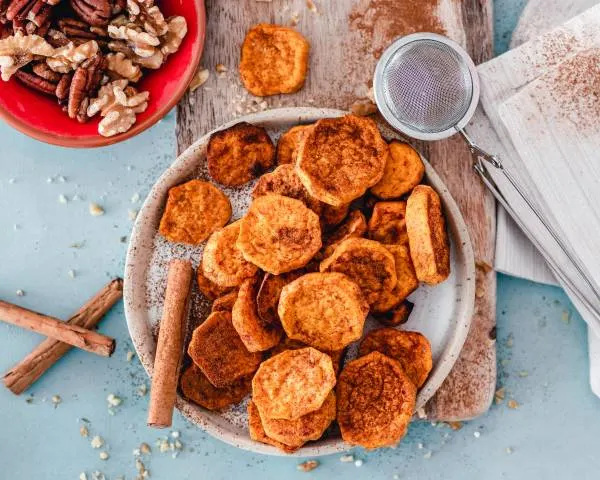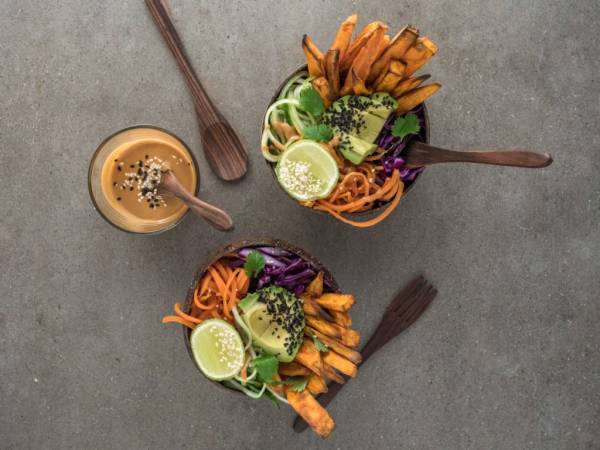Potatoes are among the world’s most popular veggies. Everyone drools in seconds when they taste fries, potato leek au gratin, or crispy roasted potatoes with gremolata.
One kind of potato is a sweet potato, which is famous among people of all ages for its sweet, nutty flavor.
Although it is easy to grow indoors, it comes with its own hitches.
If you are wondering: “Why do sweet potatoes turn black?” This post is just for you. The flavorful experience of any dish having sweet potatoes as a primary ingredient can be easily damaged if the potatoes turn black.
Blackened regular potatoes are potatoes that have lost all their nutritional benefits, and for the same reason, they mostly end up as waste.
It has been hard for people to preserve peeled or unpeeled potatoes for longer periods, which is quite a concern because food waste around the world has epically increased since the 90s.
But is it the same for sweet potatoes?
As it’s a huge concern, knowing why do sweet potatoes turn black can help significantly.

Why Do Sweet Potatoes Turn Black? | 3 Main Reasons!
Here are the 3 main reasons why sweet potatoes turn black.
1. Reckless Handling
Vegetables are frequently mishandled during transit, either deliberately or due to long routes and other transportation challenges.
Many veggies are even thrown away while being transported from one location to another. This may include shipping or air transportation of the vegetables.
Nonetheless, careless handling is a huge problem behind sweet potatoes turning black. The transportation process can put pressure on sweet potatoes, due to which these potatoes can easily get spoiled.
The other problem that arises after the potatoes get squashed is microbial organismic attack. Once infected with microorganisms or fungi, you can find black spots on the potatoes.
You’ll need to discard these potatoes immediately as there is always a possibility that they may spread the disease to other potatoes.
There’s a possible chance of them affecting other potatoes packed together.
2. Chlorogenic Acid
Phenols are one of the main components of sweet potatoes, usually known as phenolic compounds.
“They are complex organic molecules and are primarily responsible for the sweet, nutty, tentative aroma and flavor of sweet potatoes.“
Chlorogenic acid is one of the phenols present in sweet potatoes as well as in regular potatoes.
The pH level of chlorogenic acid (CGAs) and its concentration depend on the appearance and nutrients in the potato tubers.
This chlorogenic acid is mainly beneficial for weight loss and controlling blood pressure. Other than that, it also helps in protecting the human digestive system from infections and significantly improves mood.
As all types of potatoes are grown under the soil, these compounds protect them from getting infectious.
This chlorogenic acid forms black and green colored compounds in the presence of iron ions. For the same reason, both sweet and regular potatoes have antioxidant properties.
However, the change of color doesn’t affect the edibility of the potatoes at all. You can eat and cook blackened and green potatoes, as it doesn’t affect your stomach in a harmful manner.
3. Oxygen
The main thing that plays an essential role in the discoloration process is the chemistry of chemical compounds.
If your potatoes haven’t contracted the iron ions, they will contact oxygen molecules to initiate the discoloration process.
But for that, they will have to come in contact with the formula or compound with oxygen in it.
The discoloration, however, still doesn’t affect the edibility of the potatoes, nor does it make them taste bad. The only thing they do is discoloration, that’s all.
More often, the discoloration starts when the potatoes come in contact with the water. As usual, they are washed and boiled in the water, so it’s pretty common for them to turn black in no time.
How Can One Avoid Sweet Potatoes Turning Black?
Now that’s a question that needs to be answered!
1. Cold Water
We discussed before that how it’s impossible for the potatoes to not get in contact with the water or oxygen.
It is important to mention here that water that is boiled or has regular room temperature can cause rapid discoloration.
However, when it comes to cold water, sweet potatoes don’t get discolored, as the water temperature doesn’t allow the oxygen to react with chlorogenic acid.
That means washing sweet potatoes with cold water can help you deal with discoloration.
If this is not enough, the interesting thing is that there are other tricks to deal with the blackening of sweet potatoes too.
For instance, the use of lemon, salt, cream of tartar, or vinegar.
2. Lemon and Vinegar
Lemons have been such a good aid in many of our daily cooking snags that we can’t even think what a world without lemons would have been.
From supporting heart health to removing stains, it has always been a helping hand.
The most mind-blowing property of lemon is that it has an acidic nature that allows it to hinder the oxidation process.
You can either spray lemon juice over sweet potatoes or simply apply lemon directly onto the peeled surface of sweet potatoes.
You can do the same with vinegar as both are acidic and antioxidant in properties.
3. Salt
All salts have antioxidant properties and have been used for preservation throughout history.
From Egyptian mummies to fruits and vegetables, all were perfectly preserved by salt mixtures. The same salt today is used in many ways.
All you need to do is dissolve salt into the water in a bowl and wash the potatoes in that water.
Make sure you rinse those potatoes off before cooking to avoid salty flavor if you don’t need it!
Also read: How Long Does It Take for Store Bought Potatoes to Sprout?
4. Cream of Tartar
A powder named cream of tartar is a winemaking acidic byproduct used in many dishes, such as cake, bread, pizza, etc., under the name of baking powder (baking powder is actually a mix of baking soda and cream of tartar).
It can be used by mixing it in a bowl of water to prevent burning. Mix half a teaspoon of cream of tartar in 1 cup of water and pour the mixture over your potatoes.
It will keep the potatoes from turning brown during cooking!

Let’s conclude the article.
Conclusion
So, why do sweet potatoes turn black? Hope you got the answer!
Although all your sweet potatoes are turned back, the discoloration can still be removed. All of the above ways will result in perfectly cleaned sweet potatoes. There will be no turning black or brown!
If you find this article helpful, consider sharing it with your friends and family.
Regards,
Stay safe!
